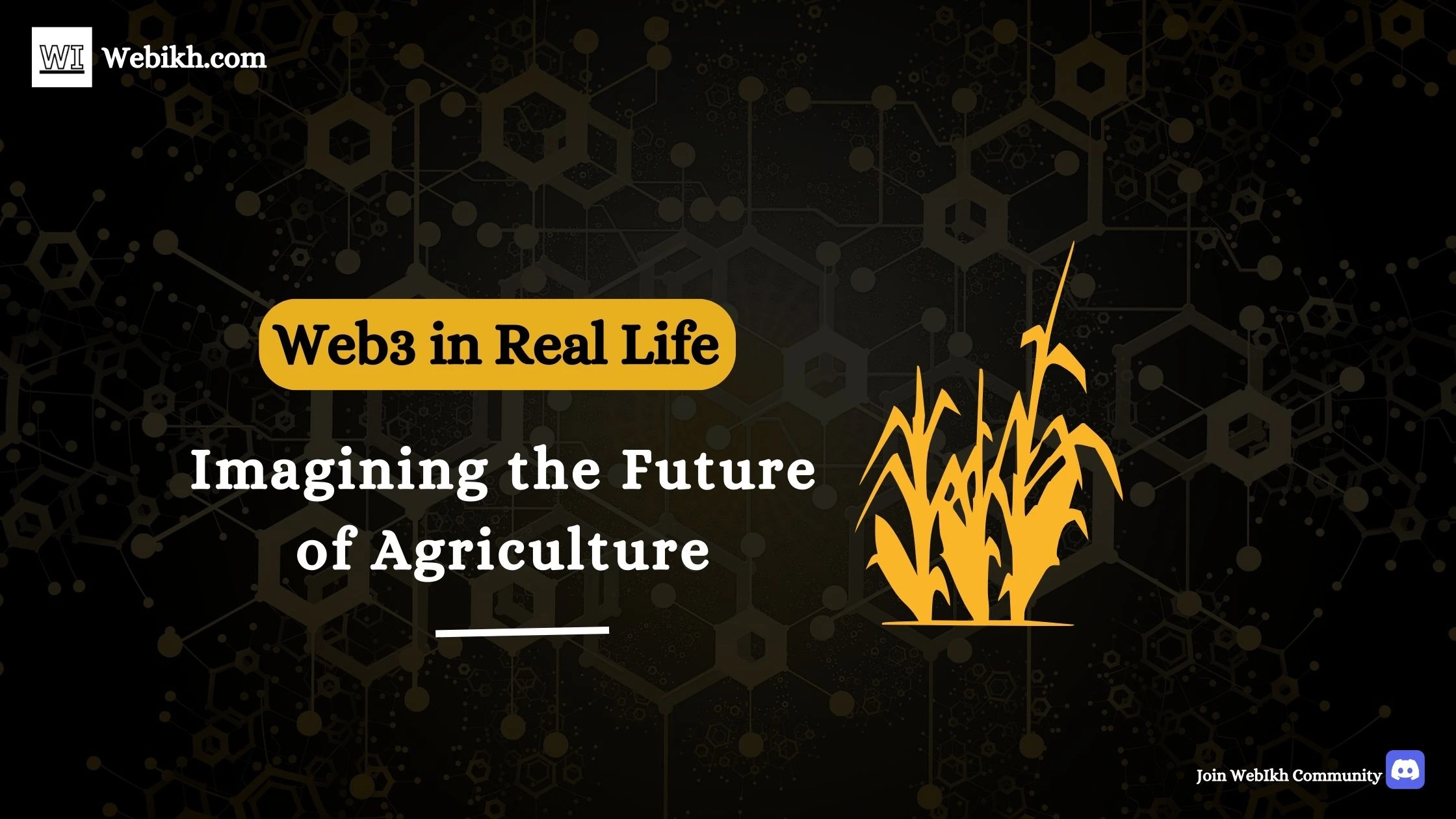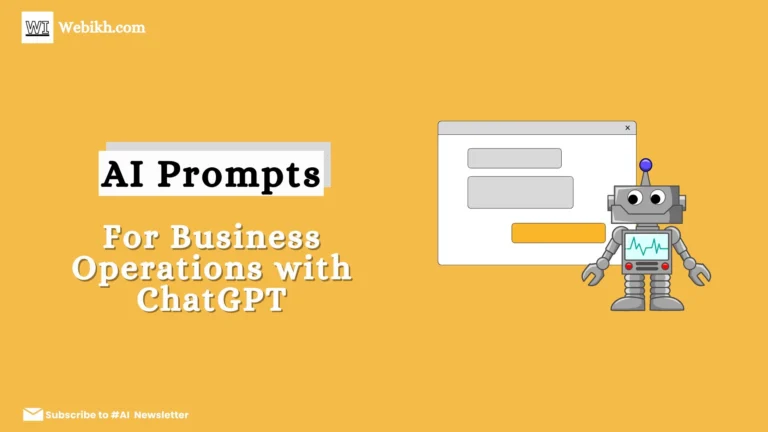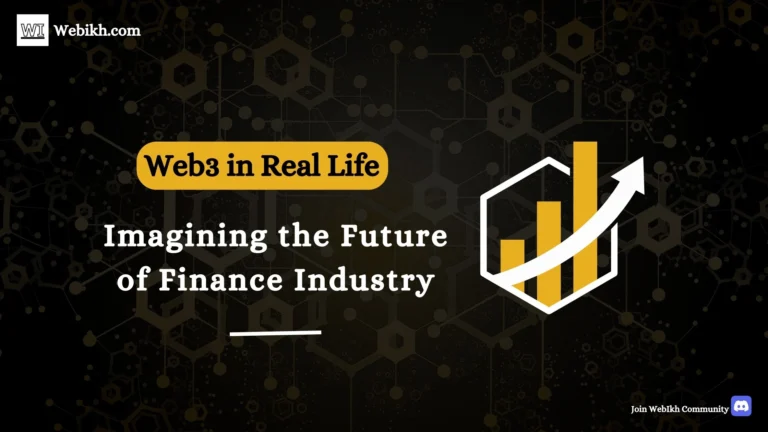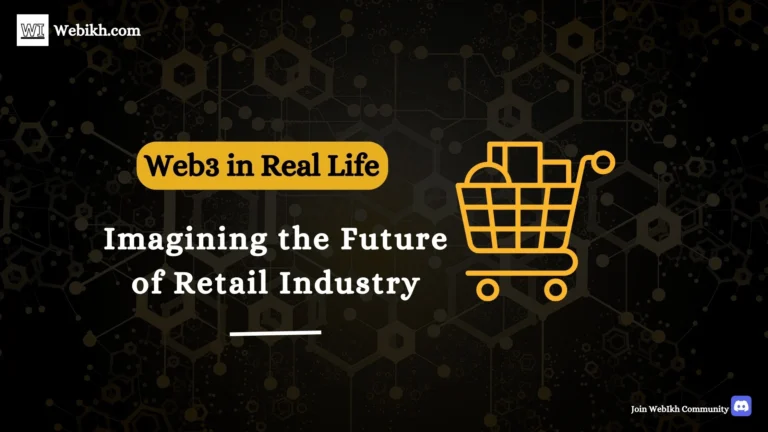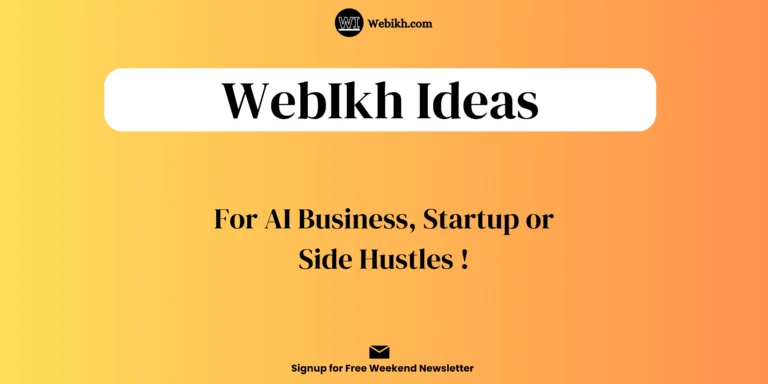What is Agriculture’s future With Blockchain an AI in 2024
What is farming in web3?
How does the future of Agriculture will look like with blockchain?
Can technologies like Metaverse, Artificial Intelligence, Cryptocurrency and NFTs be used in Agriculture?
You must be having these questions right?
Let’s dive deeper in the world of web3 and see what it offers for your plate & tummy 🍽️ ?
Let’s start with the problems the Agriculture sector faces and how it can be tackled ?
Subscribe to Webikh Newsletter
The Only AI and Web3 Focused Newsletter
Subscribe & Download Freebies !
The Problem
Muddy Waters in Food Supply Chains 🌧️🍞
Imagine biting into a delicious sandwich at your favorite deli.
Ever wondered where those crisp lettuce leaves or that juicy tomato came from? The journey from farm to plate is often an opaque one.
Food supply chains today face several challenges:
Lack of Transparency:
Information about where your food comes from, how it’s grown, and its journey to your table is often hidden behind a curtain. This makes it challenging to ensure food safety and sustainability.
Wasteful Practices:
Agriculture accounts for a significant portion of global waste, with inefficiencies in planting, harvesting, and distribution. Precious resources like water and soil are often squandered.
Quality Control:
Maintaining consistent quality and safety standards for food is tricky when supply chains span the globe. Contamination or poor quality can slip through the cracks.
Market Access:
Small-scale farmers often struggle to access wider markets, limiting their potential income and growth.
Environmental Impact:
Agriculture is a major contributor to environmental issues, including deforestation, water pollution, and greenhouse gas emissions.
So, how can Web3 technologies like blockchain, AI, and the Metaverse come to the rescue of our plates and planet? Let’s break it down. 🌍🍏🤖
The Solution
“Web3 Cultivating Transparent and Sustainable Agriculture”🌐🌾📡
Blockchain in Food Supply Chains 🧩🍽️
Blockchain technology, the same ledger system that powers cryptocurrencies, can create transparent and tamper-proof records of food supply chains.
Here’s how:
- Traceability: Each step in the journey of food, from farm to table, can be recorded on the blockchain. This means you can track your salad greens right back to the field they were grown in.
- Quality Assurance: Smart contracts can automatically enforce quality and safety standards. If a batch of produce doesn’t meet the criteria, it won’t proceed along the chain.
- Reduced Waste: With real-time data, supply chains can optimize routes and storage, reducing spoilage and waste.
AI for Precision Farming 🚜🤖🌾
Artificial intelligence can play a significant role in making farming smarter:
- Crop Monitoring: Drones and sensors equipped with AI can monitor crops, identifying diseases, nutrient deficiencies, or pests early on.
- Optimized Resource Use: AI algorithms can recommend when and where to plant, irrigate, or harvest, conserving resources.
- Predictive Analysis: AI can crunch vast amounts of data to predict market demand, helping farmers make informed planting decisions.
Metaverse-Based Agricultural Simulations 🌐🎮🌾
The Metaverse, a virtual shared space, can offer valuable tools for agriculture:
- Training: Farmers can practice techniques and strategies in virtual environments before applying them to real fields.
- Data Visualization: Complex data, like weather patterns or soil composition, can be visualized in 3D, aiding in decision-making.
- Collaboration: Farmers from around the world can meet in the Metaverse to share experiences and solutions.
These solutions aim to make agriculture more sustainable, transparent, and accessible, ultimately putting safer and healthier food on our plates.
How It Will Work: A Day in the Life of Smart Agriculture 🌅🌾🤖
Picture this: A farmer, let’s call her Maria, starts her day in the year 2030. She slips on her augmented reality (AR) glasses connected to the Metaverse.
Crop Analysis: Maria scans her fields with her AR glasses, and data about soil health, moisture levels, and crop conditions pop up in her display.
Blockchain Transparency: She checks the blockchain ledger to see which local restaurants and markets are interested in her organic produce.
AI Guidance: Her AI assistant suggests optimized planting schedules based on weather forecasts, helping her reduce water usage.
Virtual Meeting: In the Metaverse, she joins a virtual farmers’ cooperative meeting. They discuss the latest AI-driven pest control techniques.
Drones at Work: Drones equipped with AI cameras patrol her fields, spotting early signs of pest infestations.
Maria’s day is more productive and sustainable thanks to Web3 technologies.
The Impact: A Greener Future for Agriculture 🌍🍀🚜
The introduction of Web3 technologies in agriculture promises several benefits:
- Transparency: Consumers can make informed choices, knowing the journey of their food.
- Sustainability: Reduced waste and optimized resource use can make farming greener.
- Profitability: Small-scale farmers can access larger markets and earn better incomes.
- Food Safety: Quality control measures can reduce foodborne illnesses.
- Environmental Stewardship: Sustainable practices can reduce agriculture’s impact on the environment.
While these possibilities are exciting, there are also challenges on the horizon. In the next section, we’ll explore these hurdles, from technology adoption to privacy concerns. Keep reading to find out how the game changers of Web3 plan to tackle these issues! 🌐🚜🤔
Risks and Challenges: Navigating the Agricultural Landscape 🌄🌾🔍
While Web3 technologies offer promising solutions, they aren’t without their share of challenges:
- Adoption Barriers: Not all farmers have access to the necessary technology. Smallholders, in particular, may struggle to afford the initial investment.
- Data Privacy: Collecting vast amounts of data about crops and farming practices raises concerns about data privacy. Who owns and controls this data? How can it be used, and by whom?
- Education and Training: Farmers need training to use these advanced tools effectively. Without proper guidance, technology can be overwhelming.
- Interoperability: Ensuring different technologies (like blockchain systems and AI tools) can work together seamlessly is a significant technical challenge.
- Environmental Impact: The increased use of technology, particularly energy-intensive blockchain networks, could have an adverse environmental impact if not managed sustainably.
- Market Access: While technology can bridge gaps, it must ensure that small-scale and local farmers don’t get overshadowed by larger, tech-savvy competitors.
Opportunities and Possibilities: Sowing Seeds of Transformation 🌿🌟🚀
In the vast fields of agriculture, Web3 technologies open up exciting possibilities:
Global Access: Farmers worldwide can connect, share knowledge, and access global markets, leveling the playing field.
Data-Driven Decisions: AI can process vast datasets, helping farmers make informed decisions about planting, irrigation, and harvesting.
Sustainability: Optimized resource use and transparent supply chains can make agriculture more environmentally friendly.
Food Safety: Blockchain ensures that food recalls and safety issues are traced quickly to their source, preventing widespread contamination.
Economic Growth: Small-scale farmers can access wider markets and receive fair compensation for their produce.
As we nurture this Web3-driven transformation in agriculture, it’s essential to address challenges wisely and explore these opportunities fully.
MUST READ:
What is Transportation’s future With Blockchain, AI and Crypto ?
What is Supply Chain’s future With Blockchain, AI and Metaverse?
What is Retail’s future With Blockchain, AI and Metaverse?
What is Real Estate’s future With Blockchain, AI and Metaverse?
Conclusion: Cultivating a Brighter Agricultural Future 🌻🌄
In this Web3-enabled future of agriculture, the farm-to-plate journey becomes a transparent, sustainable, and equitable one. Farmers, big and small, can embrace AI, blockchain, and the Metaverse to grow our food more efficiently and responsibly.
This revolution won’t happen overnight.
It requires cooperation, investment, and a shared commitment to a greener, healthier future.
By planting the seeds of Web3 technology today, we can look forward to a harvest of positive change tomorrow.
The next time you bite into a crisp apple or enjoy a salad, you might just know its journey intimately, thanks to the wonders of Web3 in agriculture. 🍏🥗

FAQ : AI & Blockchain for Agriculture
Agro blockchain refers to the use of blockchain technology in agriculture to enhance transparency and traceability in the food supply chain, from farm to fork.
What is the role of AI in smart agriculture?
AI in smart agriculture plays a crucial role in monitoring crop health, optimizing irrigation and fertilization, predicting weather patterns, and automating tasks like harvesting and pest control, leading to increased yields and sustainability.

